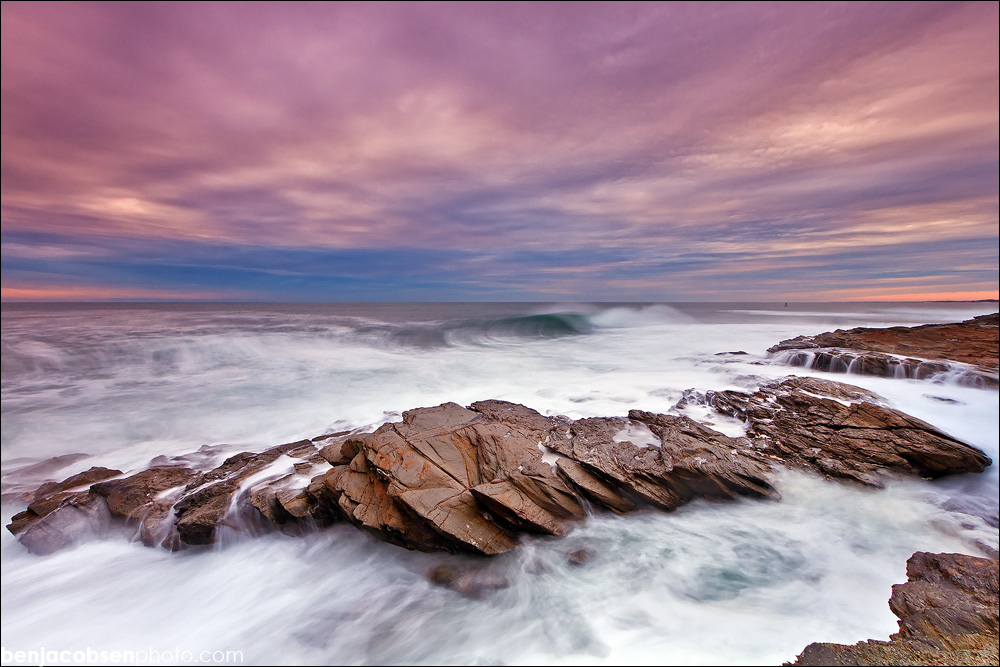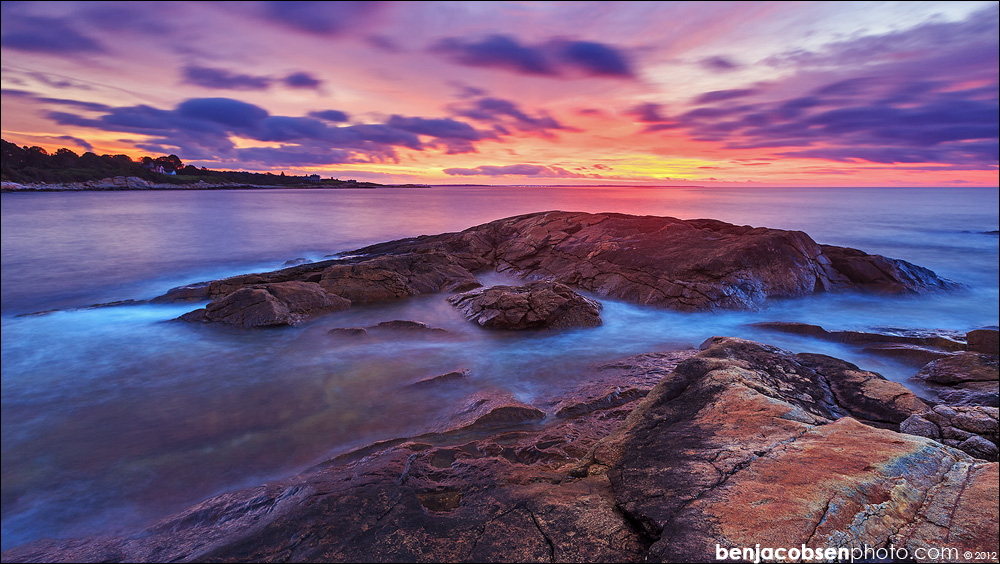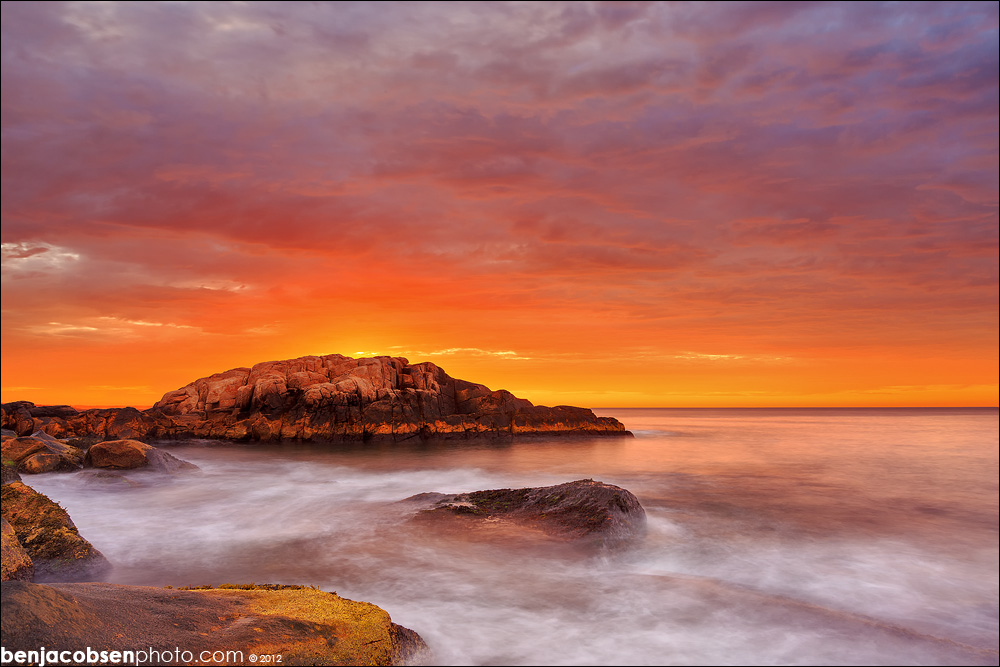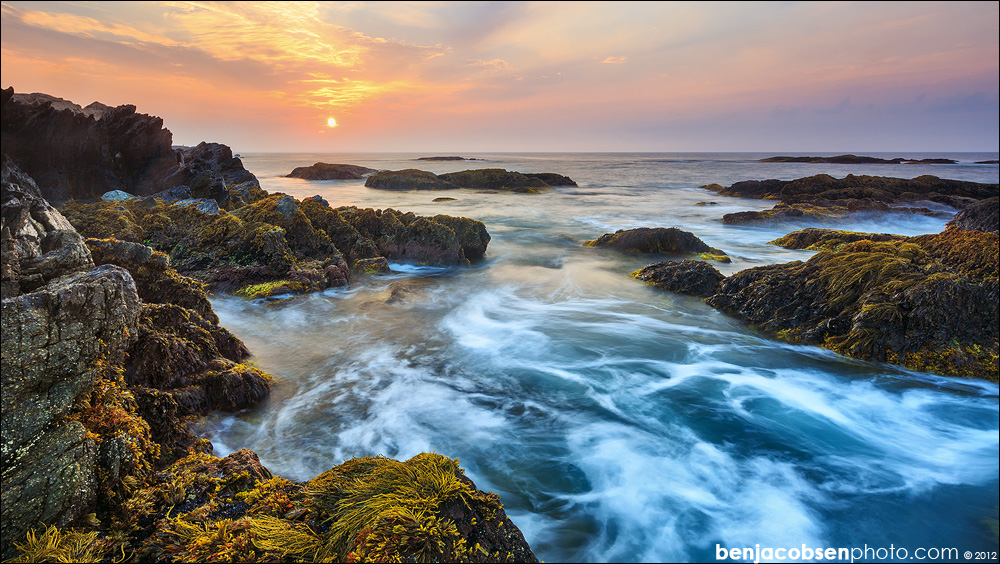Filters are one of my most used tools in my kit. After the obvious camera, lens and tripod I use for my landscapes, my filters are always the next pieces out of my bag (followed by my remote). I prefer to capture my images as best as possible in camera to avoid as much processing as possible. Filters come a lot of options and that causes a lot of confusion. The goal with this post is to show you what I use, and help show you where to get it as I know it finding what you need isn’t easy even once people tell you you want a “Lee 3 stop hard transition 4×6” GND”…
First, let’s start with what all those terms mean in the description of that specific filter. Lee is the brand. The three major brands in the US are Lee (best/most expensive), HiTech (medium quality and price, imported from Formatt in the UK), and Cokin (cheapest and least neutral). 3 stop is the density of the filter, or how dark it is in the top section (if it’s a GND, if it’s an ND, this also applies but the whole filter is the same color). Hard describes how quickly the transition from light to dark happens. Hard is fast, soft means it’s stretched out over a longer distance. There are also blender filters that transition across the entire length of the filter. 4×6 is the size of the filter in inches. The same filter could also be called a 100×150 for it’s size in millimeters, but in the US they use inches. GND stands for Gradual Neutral Density which means it’s dark on one and and clear on the other with a gradual transition somewhere between.

Now, on to what I use, and what I suggest you look for. My filter kit has changed several times since I started using filters years ago. When I started using GNDs I owned a sigma 12-24mm lens and used it on a Full Frame body so I was told “I couldn’t use filters with that lens”. I ended up sorting out a way to make it work which you can see here. Because of the size of that lens and resulting setup, I was forced into using Cokin filters as they were the only option for filters larger than 4×6 at that time. Now none of this concerns the vast majority of you, but I’m bringing it up because I was basically forced into using the “worst” quality filters (Cokins) when I started because of this sizing issue. And I’ll tell you, while there IS a color cast to cokin filters (slightly red/magenta) it’s NOT all that bad, and in the majority of my sunrise and sunset shots I actually LIKED the effect. They were NOT neutral, but they worked very well. Once I switched to a more traditional wide angle lens that took threaded filters, I switched my setup to a traditional 4×6″ filter kit with a cokin holder and ring and I went with HiTech GND filters as everyone said they were more neutral than the cokins and the best compromise between cost and color. This is true, but I’ve also seen color issues with HiTechs, especially when you stack 2 filters when needed. I now shoot with a Lee kit and will replace them with Lees if I have to. They’re more expensive, but it’s a much nicer product.
Basically what you need to know when it comes to the brand of your GNDs is the more you pay the more neutral the filter will be. You can see that the cokins are slightly red just looking at them in your hand. With HiTechs they look gray and shoot gray with one filter all the time. With 2 filters stacked the images will be slightly pink, but not terrible. With Lees, they look gray and shoot gray even when stacked.
Now onto what specific parts you should get. I use a Lee foundations kit with the correct adapter ring for EACH lens. I then use my “LEE Filters 4×6″ Graduated Neutral Density (ND) 0.9 Resin Filter – Hard Edge” (or my “3 stop hard” as I like to call it) for the majority of my shots, as well as my Lee 4×4 circular polarizer (that’s NOT infact a circle, it’s a 4″x4″ square filter made with circular polarized glass). If I’m in the mood for some seriously long exposures I’ll swap the Lee CP for my Lee 10-stopper which is a 10 stop neutral density filter. All of this then goes into a clik elite filter valet. That’s three filters, three velvet filter holders, one filter holder, on filter wallet, and one ring (per lens in my case).

Some people will get one ring and thread it onto the lens in use each time they setup, but that’s too much of a PITA for me so I have a ring for each lens. Taking my laziness a step further, I have also replaced all my lenscaps with neoprene lenscaps so that I can leave these rings on my lenses all the time. This makes setup VERY easy for me (I hate fighting with an adapter ring at 5am…) and is worth the additional cost for the ring ($30 each) and lenscaps ($13 each).
As for the quality of the filters, It would seem the cokin and the hitech are very close in terms of their color. Cokins filters are the same thickness and come with nicer sleeves. The cokin filters are 4″x6″ though, -vs- 4″x5″ on the hitech. This is a nice difference as a 4×6 gradual ND can very easily be used as an ND filter when pushed all the way into a holder. A 4×5 can as well on some lenses, but not all… 4×6 also means less finger prints on the working portion of you filter as you handle the filters. Cokin’s filter numbering system is NOT easy to understand though. All their grads are a 121 filter, but the letter at the end tells you the density and the transition. HiTech’s color is said to be the best compromise between price and color. Personally I’m not seeing a big color difference between their filters and the cokins. While they’re very close in price ($60.50 for the cokin -vs- $62.50 for the hitech) you get a 4×6 with the cokin -vs- a 4×5 for the hitech and the cokin comes in a nicer pouch… Lee is more neutral and comes with a nicer sleeve, but you really can’t carry the lees in their sleeves if you’re going to be bringing more than 1 or 2 along with you (you’ll need to spend some more money on a holder just for the filters). The Lee is also more expensive at ~$95.
The other thing to decide on is hard edged grads -vs soft edged grads. If you’re shooting at less wide focal lengths you basically need hard edged grads. But at wide angles it’ll depend on both how wide, and what you are shooting. For me, I used soft grads when I was shooting my 10-22 on my 7D, but on my full frame cameras I use hard grads exclusively. Others will tell you if the horizon is flat (ocean) use hards, but if it’s busy or complicated, use softs (trees or mountains sticking into the horizon). Generally I’d suggest you try one of each to start if you can afford it, (and make them each 3 stops IMHO) then see which you prefer with where and how you’re shooting.
Here is a table with links to all the filters on B&H’s site. As you all know, I am an affiliate with B&H, but they’re not paying me to do this, I’m simply doing this because GNDs are VERY confusing and I know this would have helped me a few years ago when I was starting with filters:
| bold text = link | 1 stop soft |
1 stop hard |
2 stop soft |
2 stop hard |
3 stop soft |
3 stop hard |
| Cokin | B&H | n/a | B&H | n/a | B&H | n/a |
| HiTech | B&H | B&H | B&H | B&H | B&H | B&H |
| Lee | B&H | B&H | B&H | B&H | B&H | B&H |

Once you have your filters sorted out, you’ll still need some more parts. First off is the filter holder. This part attaches to the filter threads on your lens. There are two basic filter holders available these days, the cokin and the lee. I’ve owned both and I strongly suggest you go with a Lee holder and rings. The only case for the cokin holder that I find legitimate is the lee holder seems to be hard to find in stock at any given point, so if you’re in a hurry and can only find the cokin, then it’ll certainly work, but if you can either find or wait for the lee, it is a MUCH nicer holder. Now, it’s also worth noting that you do not NEED a holder. You can hand hold your filters in front of your lenses. This actually will give you a better transition from the filtered portion of the image to the non as you won’t hold it perfectly still, but it is VERY inconvenient to hand hold filters for multiple shots… My buddy Shawn Thompson swears by hand holding his filters, and he gets AMAZING results, but I’ve tried it once or twice and it’s just too much of a PITA for me to consider…
| bold text = link | Cokin | Lee | Lee UWA | |
| Filter Holder | B&H | B&H | n/a | |
| 82mm ring | B&H | B&H | B&H | |
| 77mm ring | B&H | B&H | B&H | |
| 72mm ring | B&H | B&H | B&H | |
| 67mm ring | B&H | B&H | B&H | |
| 58mm ring | B&H | B&H | B&H |
these are the accessories I’d recommend to go with your new filter kit:
| bold text = link | B&H |
| Lowe Pro S&F filter pouch | link |
| Lee Plush Envelope | link |
| Lee Multi Filter Pouch | link |
| Click | link |
| Lenscoat Medium Hoodie | link |

Let me say these images are all 100% straight out of the camera baring the action I run on every image to add my border and site name. These were all shot with a CWB on my 5Dii using large JPEGs as the file type and no color adjustments were made in post. I did it this way, and am clarifying this immediately in this post because a lot of what people want to know about filters is the color casts with different brands. The CWB for the camera was set with the camera on a tripod looking at the marker board that was used as the background for the images. Lighting was NOT perfectly even and there are some weird reflections coming off the marker board because of it’s somewhat “glossy” surface. Regardless, these show a pretty good comparison between the different filters in terms of colors as well as how the transitions look at different focal lengths.
here are some example images I’ve taken using my various filter options in the last few years, check the descriptions undeneath for which brand filter(s) each image used:
here’s the video with the walk through of Lee’s plant in the UK:









































Great images to illustrate the effectiveness of these filters. The issues I have with big square filters is that they are susceptible to water spray – any advice on this?
Thanks, I use a Lee filter cleaning kit as well as bringing a few cotton rags with me.
Great shot that one on the top. Nevertheless, I still struggle to learn how to make shots like that with an ND filter…
The web is full of fake and poor quality “replica” lenses. Any advice on what type of ND lenses we should get? I am eyeing some Hoya lenses…
Thanks,
bear in mind, the first shot was taken with a GRADUAL ND filter, not just an ND filter. It’s the transition that’s most important because it allows you to control the ratio of brightness between the sky and foreground. Finding good quality GNDs isn’t hard as long as you stick with good suppliers like B&H and adorama.
Ben
Hi Ben. Love this article…it’s always a great reference. Do you still use the 4×4 Lee square CPL filter? I was thinking to go the 105mm CPL route, but like the idea of the 4×4 better to use with my GNDs. Thanks!
Jamil
Jamil,
I love love love my 4×4 CP. It’s so easy to use -vs- any threaded option as it just slides into the holder. The “limitations” from not being able to rotate it really don’t make a difference from what I’ve seen. And the 105 vignettes at wider than 20ish mm anyway so there’s no way I’m giving up the wide end on my 16-35II. I’ve even seen it vignette on a 24-70…
Good Luck!
Ben
Hi Ben,
i am fascinated by the simga 12-24mm, but i think to buy the
Tokina 16-28mm 2.8, because of making night shots (stars).
You wrote: ”
nd the 105 vignettes at wider than 20ish mm anyway so there’s no way I’m giving up the wide end on my 16-35II. ”
I use a Nikon D800 and now i am not sure if a 100×100 filter is big enough.
Do you use the 4×4 and are they big enough to get no vignette.
Is the size of the filters 150×150? Which are very expensive.
This would mean that the filters cost the same as the lens. 🙁
Thanks in advance and greetings from Munich,
Hannes